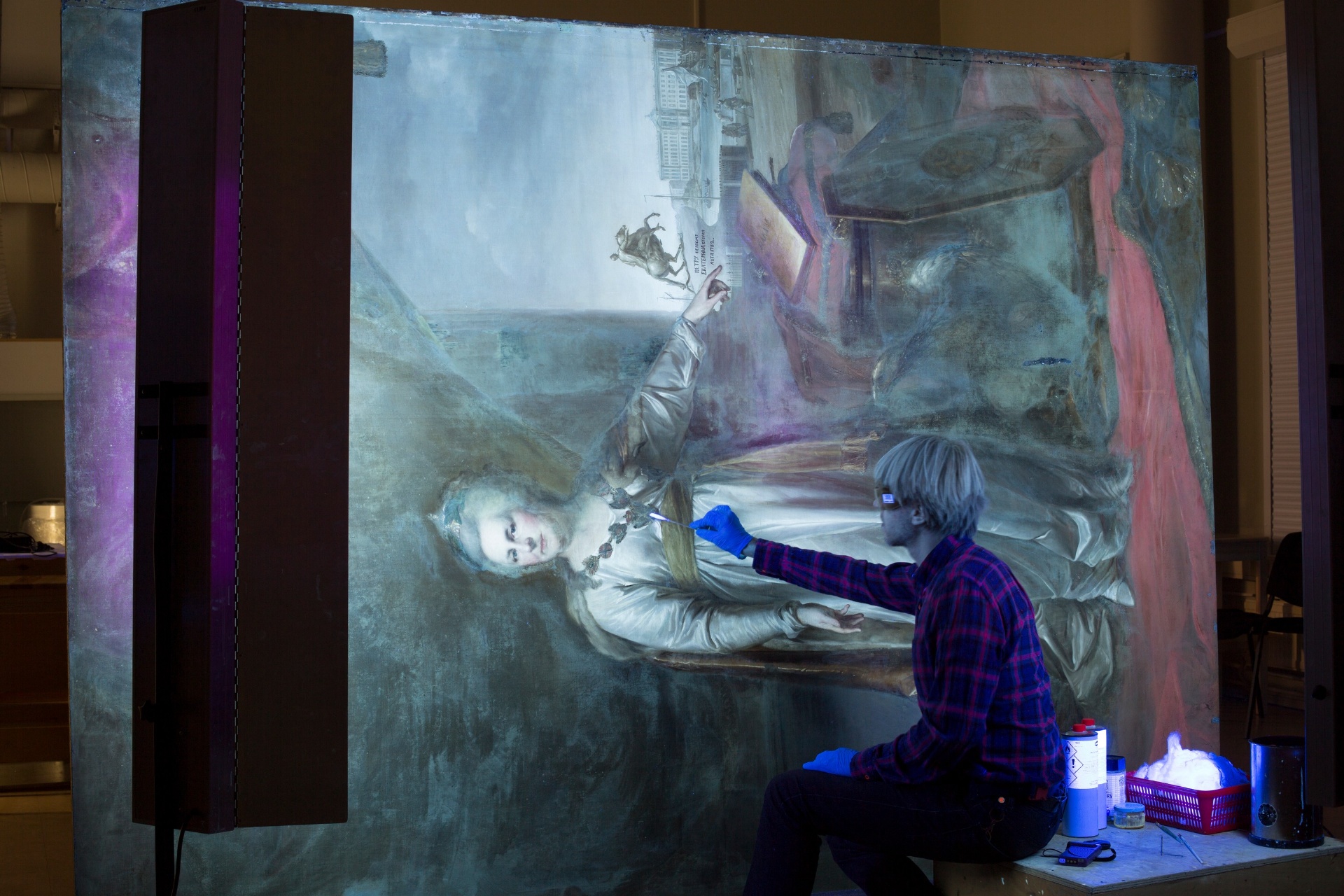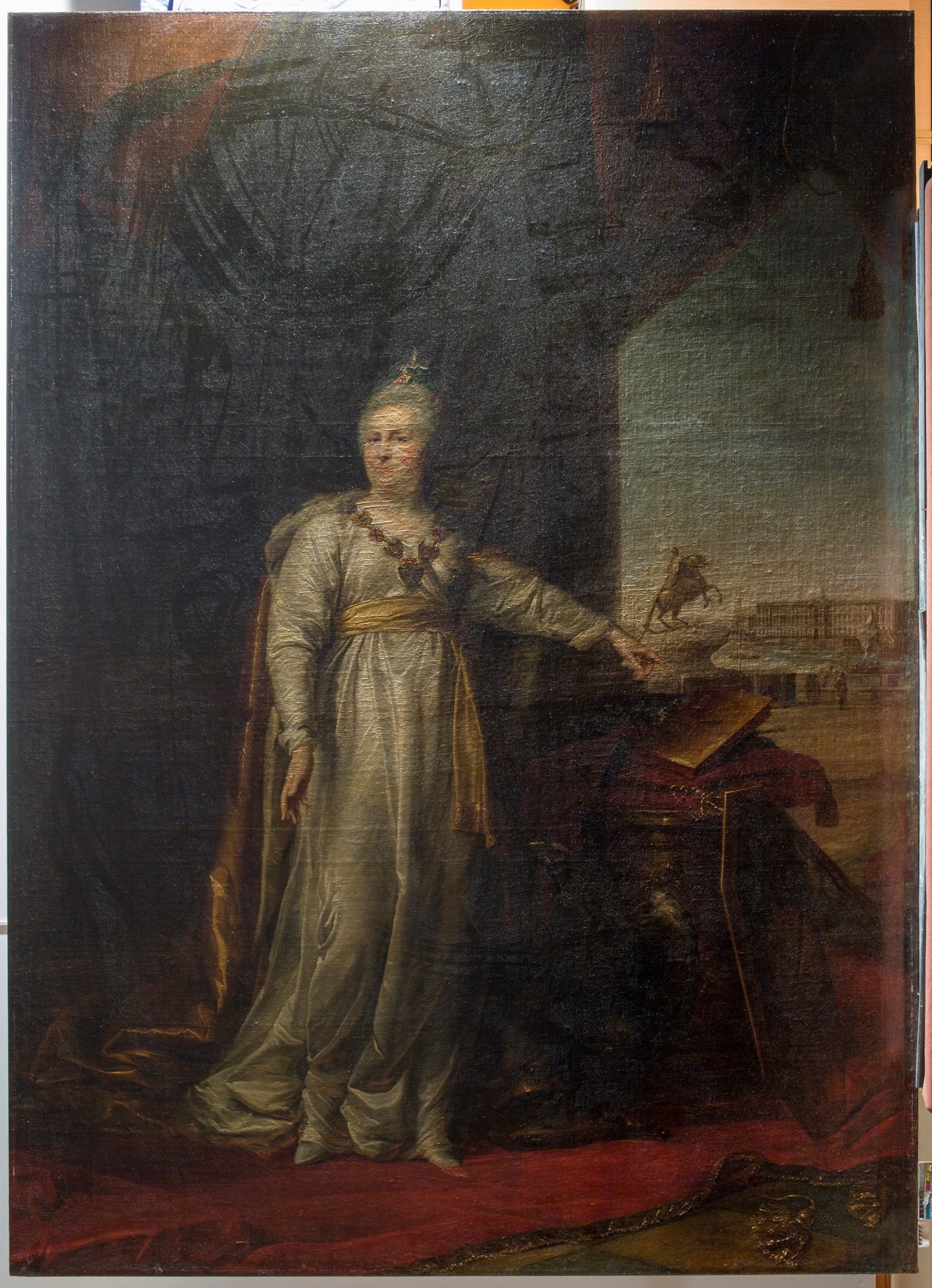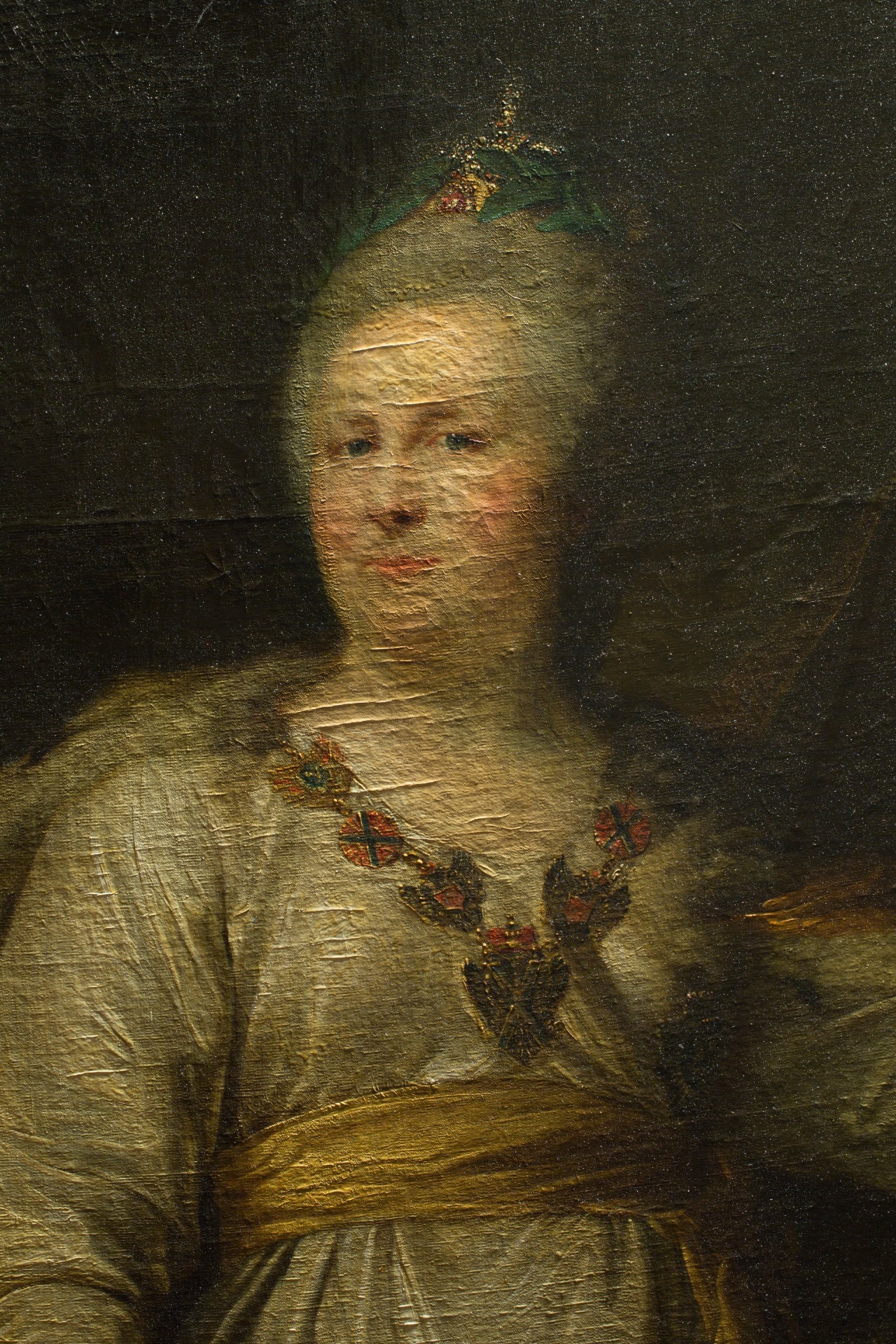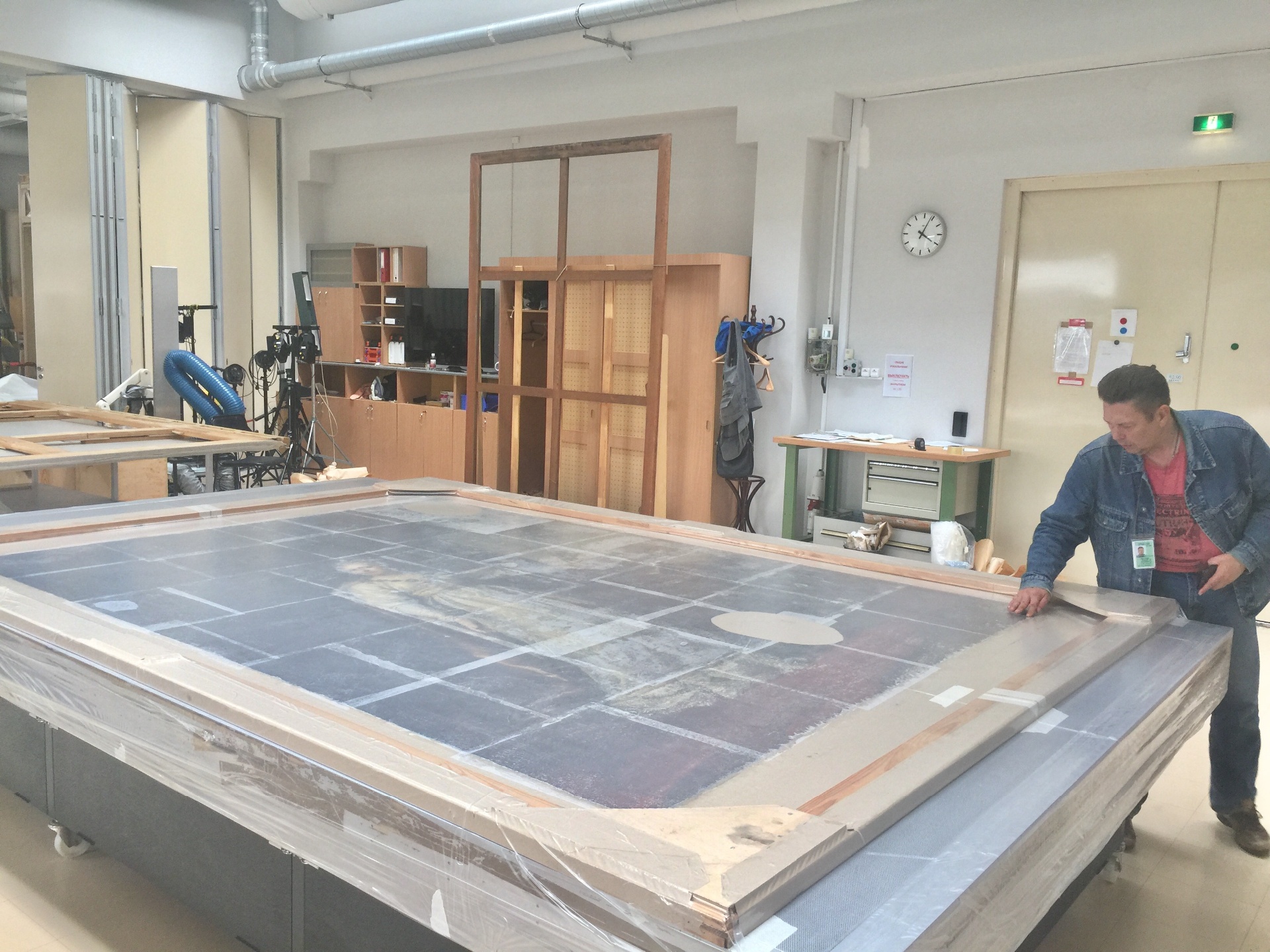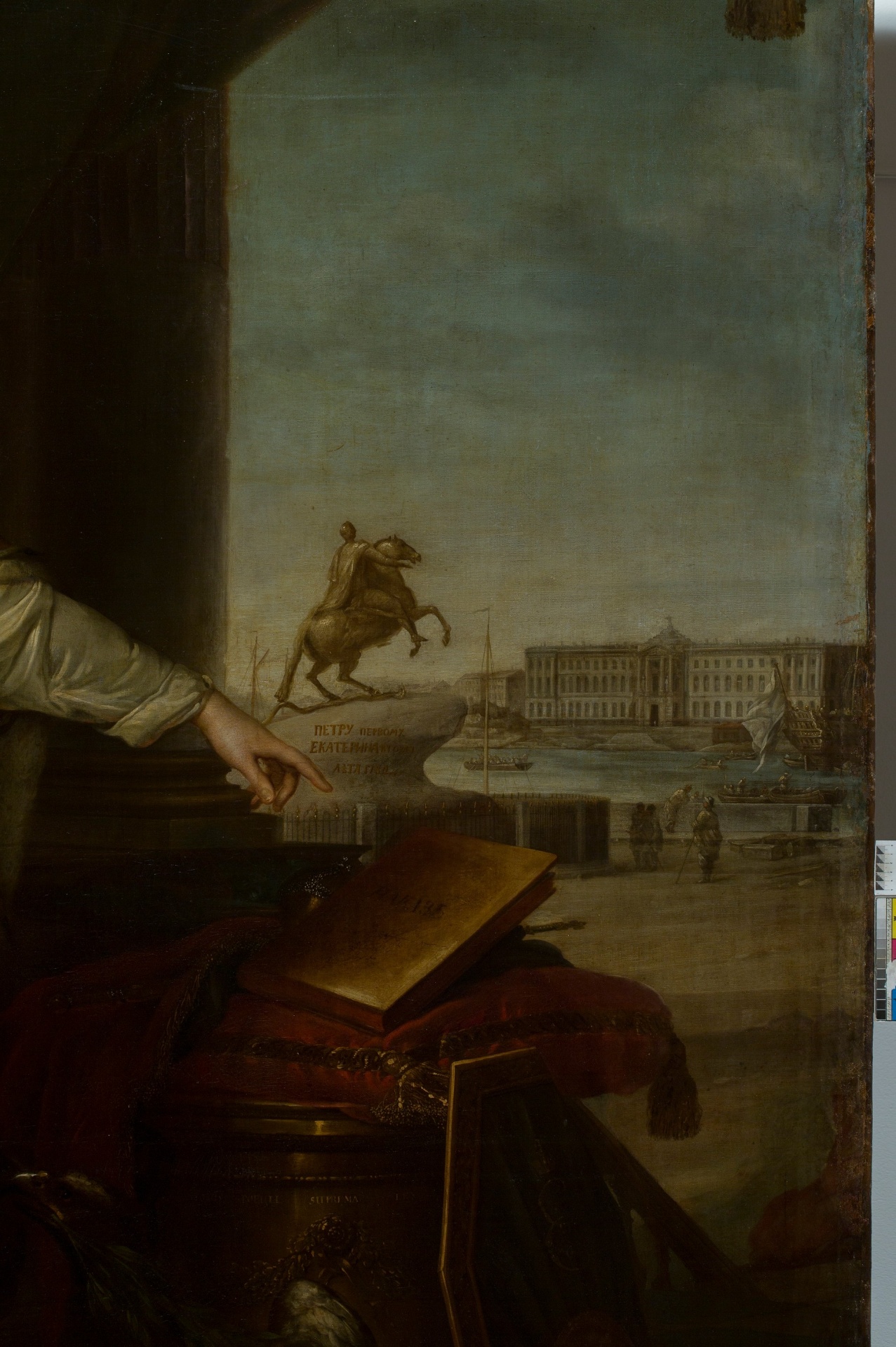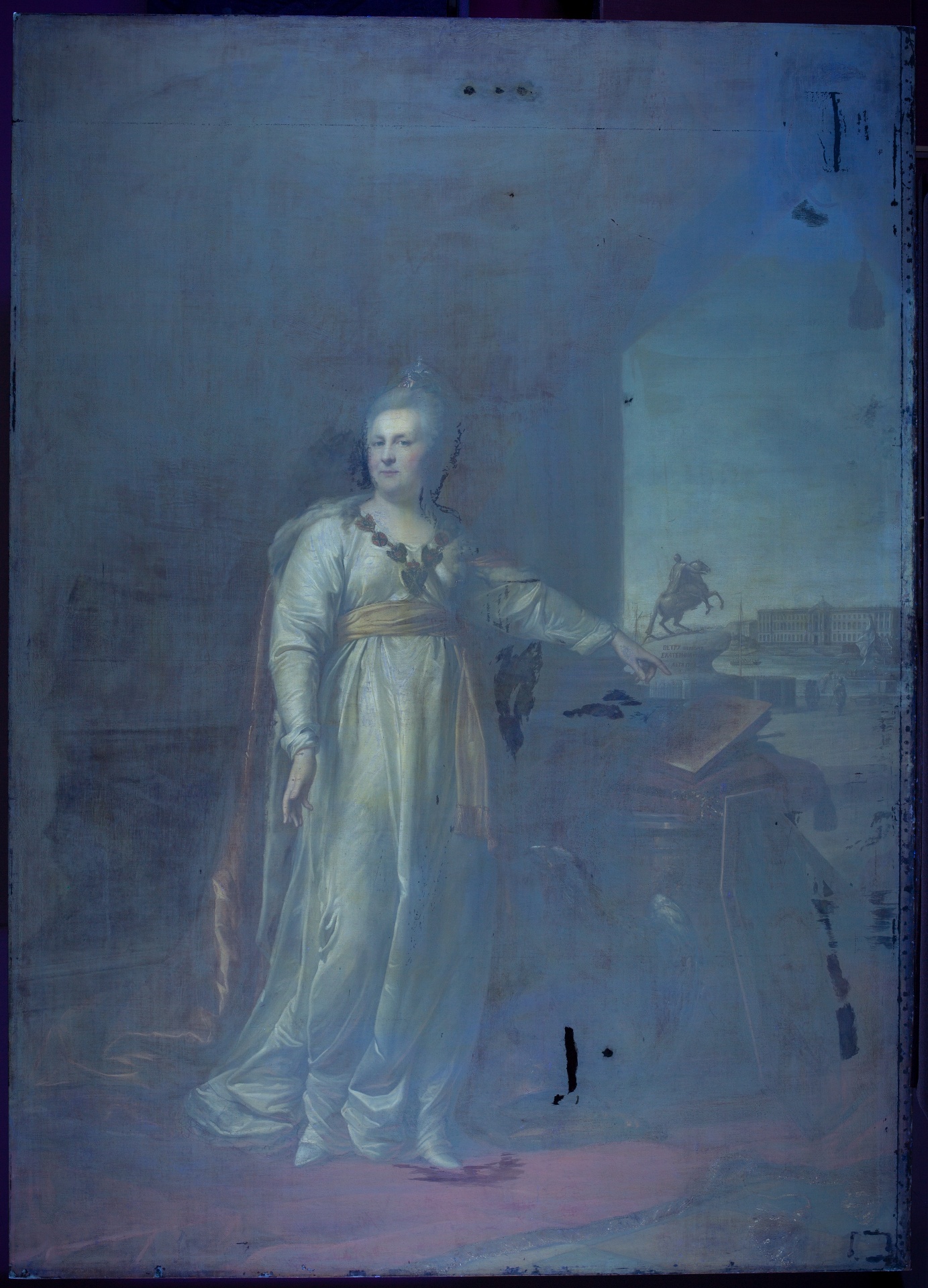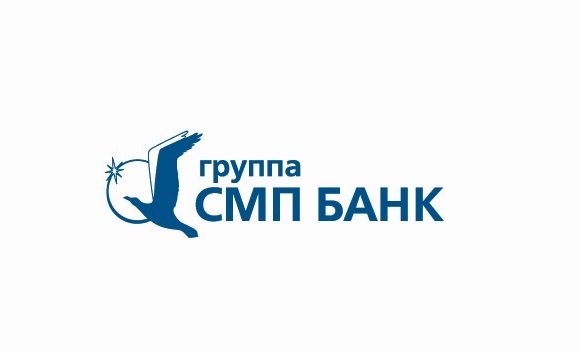Restoration of Andreas Caspar Hune’s
Portrait of Empress Catherine II
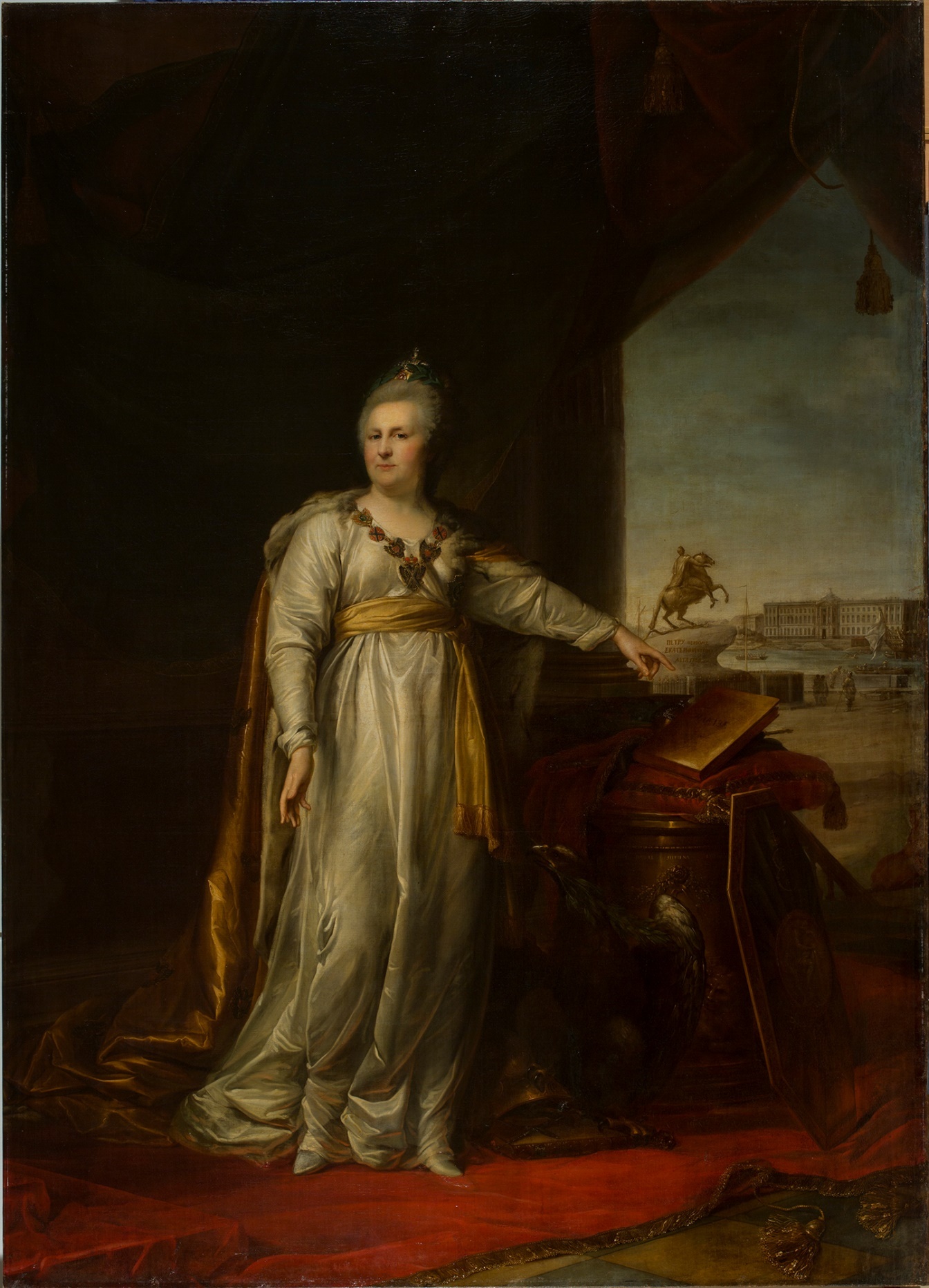 |
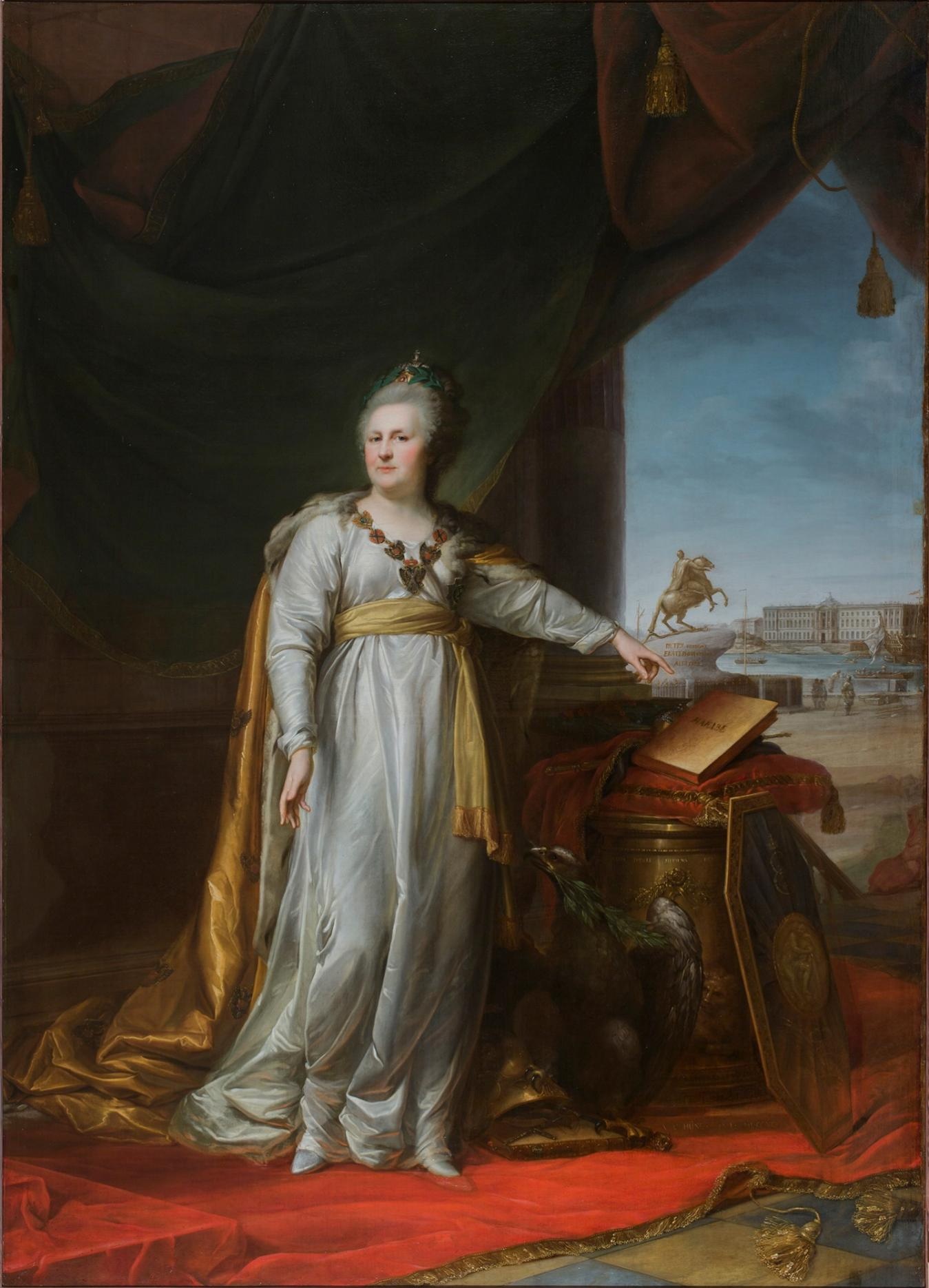 |
|
Before restoration
|
After restoration
|
Andreas Caspar Hüne (1749–1813). Portrait of Empress Catherine II. Russia. 1791.
Oil on canvas. 288 × 204 cm. Signed and dated bottom right: A. C. HÜNE […] MDCCXCI
Catherine II is depicted wearing the small crown and the chain of the Order of Saint Andrew the First-Called in front of a curtain, beyond which there is a view of Senate Square. It was on that square in 1782 that, by the Empress’s will, a monument to Peter the Great was set up. Further back again, we see the granite embankment of the River Neva and the building of the Imperial Academy of Arts that was erected on her orders in 1764–88. Lying on a pedestal next to Catherine is a volume of the Instruction that she wrote for the members of the Legislative Commission made up of elected representatives of the various estates. The Empress intended that the Commission, which functioned in 1767–68, would draw up a new law code for the Russian Empire. The details listed turn a formal portrait into a monumental historical painting, recording important changes that occurred during Catherine’s reign.
In 1790, the German artist Andreas Caspar Hüne began work on a series of large-format historical paintings linked by the idea of Russia’s military triumph and prosperity under the wise rule of Catherine the Great. The series also included a formal portrait of the Empress. A study of the entire set of paintings and the associated archival documents made it possible to conclude that the pictures were commissioned by one of the Empress’s closest associates – the Illustrious Prince Grigory Potemkin of Taurida and were most probably intended to adorn one of the majestic buildings being constructed on his orders in the recently acquired territories of “New Russia” or the Crimea. The Illustrious Prince died in 1791 and work on the commission was discontinued. Besides the portrait of the Empress, Hüne produced only three monumental history paintings that are presently in different museum collections. The painting depicting Catherine II passed to Potemkin’s nephew, Count Alexander Samoilov, Procurator General of the Governing Senate, and his descendants, coming into the State Hermitage in 1941.
This painting came into the State Hermitage as a work by an unknown artist. A visual inspection of the canvas succeeded in discovering the artist’s signature and the date: A. C. HÜNE […] MDCCXCI [1791].
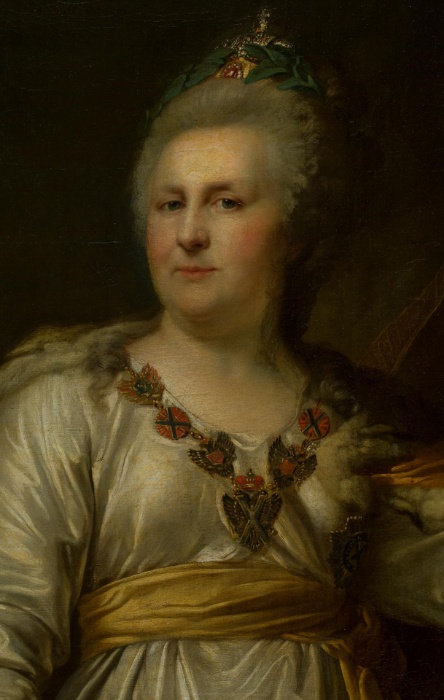 Detail. Before restoration
Detail. Before restorationBEFORE RESTORATION
State of Preservation:
The canvas has been backed. Areas of the original painting that had previously been turned over the stretcher have been straightened out. Tears going right through the support have been patched. Across the entire surface, the work is covered with a thick layer of later varnishes of various dates that have yellowed and darkened strongly. Individual details of the composition, primarily in the shadows, are practically indiscernible. The colour scheme is heavily distorted. The layer of varnish has lost its protective and aesthetic functions. The painting requires a range of work to free it from later accretions.
- 1 / 6
- 2 / 6
- 3 / 6
- 4 / 6
- 5 / 6
- 6 / 6
RESTORATION
The following restoration operations have been carried out:
- preparation of restoration documentation
- photographic documentation at all stages of the restoration process
- conduct of the necessary physical and chemical analyses
- regeneration of the coat of varnish
- refining a strategy for reducing the thickness of the varnish and the removal of old restoration overpainting
- reducing the thickness of the old varnish and the removal of old restoration overpainting across the whole surface
- application of restoration primer in places where the artist’s original painting has been lost
- restoration of the transparency of the reduced layer of old varnish across the whole surface
- coating the picture with restoration varnish
- making good the losses to the artist’s original painting (tinting)
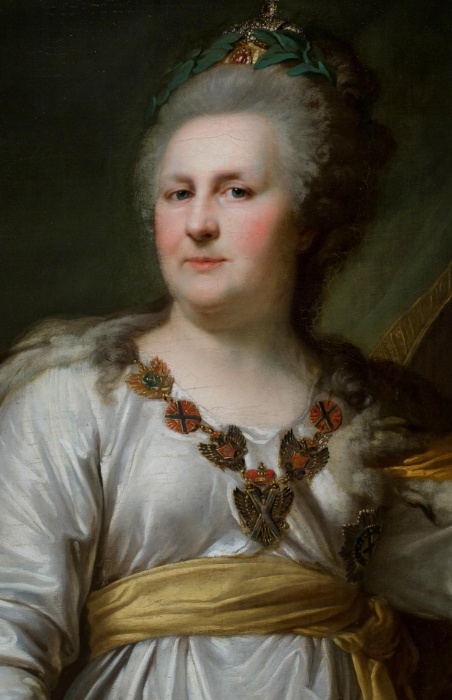 Detail. After restoration
Detail. After restorationA working group of members of the State Hermitage staff was formed for the restoration of the painting:
scholarly supervisor – Natalia Bakhareva, senior researcher in the Department of the History of Russian Culture
co-ordinator – Yevgeny Feodorov, head of the Project Finance Sector
curator – Victor Korobov, head of the Laboratory for the Scientific Restoration of Easel Paintings
artist-restorers – Andrei Krupenko and Maxim Lapshin from the staff of the Laboratory for the Scientific Restoration of Easel Paintings
Thanks to the restoration, the portrait has come closer to its original state and will soon take place back on the permanent exhibition in the Winter Palace.
